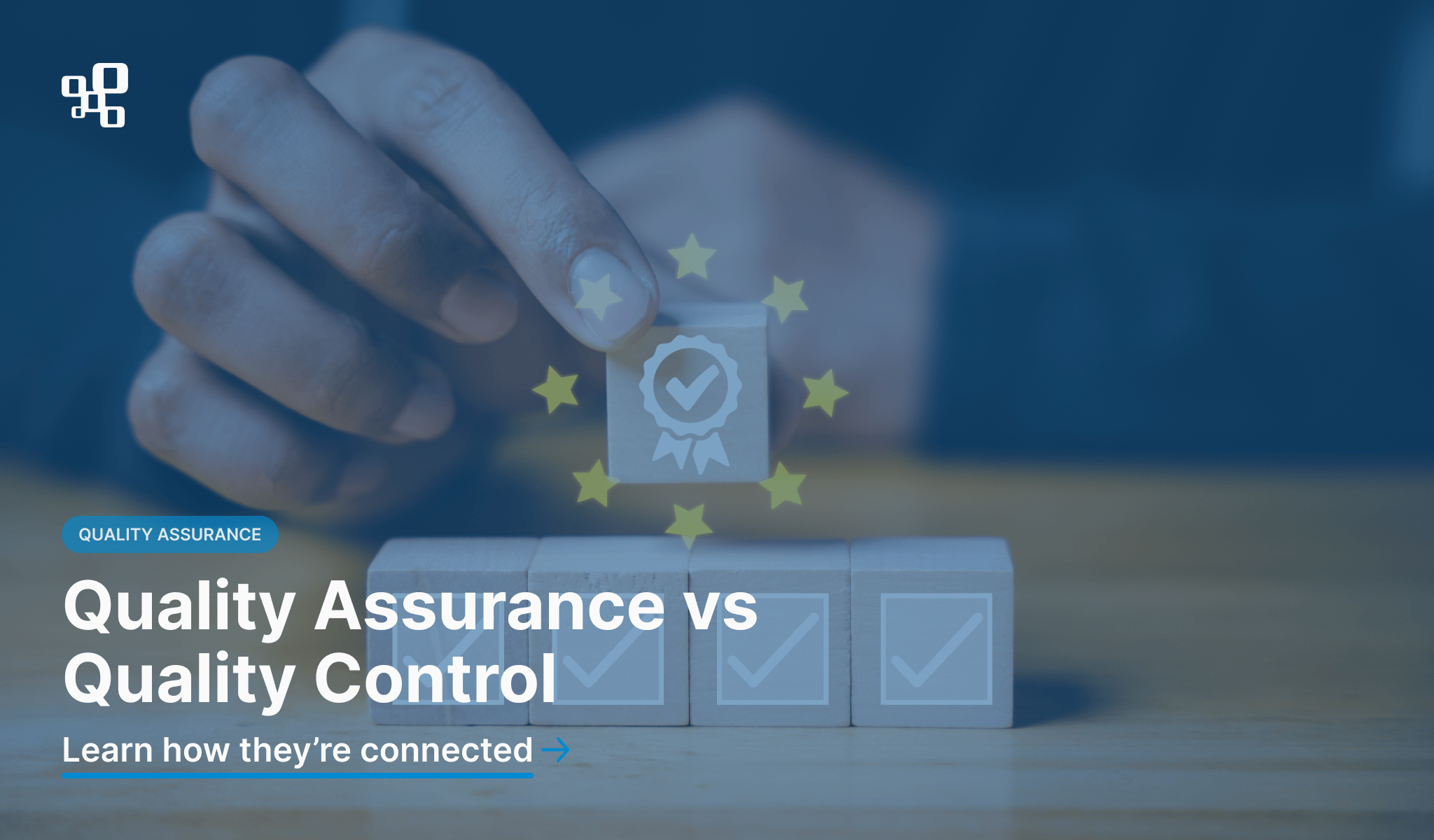When researching quality-related topics, you might come across two similar terms that are frequently confused with one another – Quality Assurance (QA) and Quality Control (QC). Since they’re both concerned with the quality of your product, it is easy to overlook the differences between these two and not notice how they interact with each other.
In this article, we’re going to clarify the meaning of both terms, and explore their impact on the quality of your product.
Quality in the making
If you’re releasing software or any other product, it would be safe to assume that you want it to be of high quality and have as few bugs or defects as possible. After all, what’s the use of flawed software, right?
If that’s the case, how would you approach the topic of quality in order to ensure the best outcome? The first thought is usually testing. Obviously, you would want to check your software to reduce the number of bugs, and testing can provide you with exactly that.
Or can it?
The answer to that question is less straightforward than you might think. Testing is definitely one of the crucial elements of software development. It allows you to check each part of the software and find bugs before the user encounters them.
But it is also more like a painkiller than a long-term treatment. It might fix what is broken, but it won’t prevent these issues from happening again.
And that is where Quality Assurance comes into play.
Quality Assurance
Although Quality Assurance most certainly deals with the quality of your product, its main interest lies elsewhere. It is a set of practices responsible for maintaining a desired level of standards within your development process – process being the key word around which QA’s efforts revolve.
Instead of finding the bugs that already exist, QA specialists are focused on preventing them from happening at all. They achieve that by establishing quality standards and monitoring how they’re applied within the organization. It is much easier to keep your system healthy, if the process of its development is organized within a quality-oriented framework.
Keeping quality in mind on every stage of the development might sound like an obvious thing to do, but in reality, it is easy to forget about the bigger picture, and fall into relying too heavily on testers, assuming that finding bugs is mainly their concern. And while it certainly is their job to detect the system’s defects, bugs will keep on multiplying, if we don’t take care of their roots.
Quality Assurance should be included throughout the entire development process, to make sure that the matter of quality is always taken into account, and interwoven into the very fabric of your system.
Learn more about Quality Assurance benefits that can significantly improve your products.
Quality Control
To complement the proactive efforts of QA, there are also reactive actions of QC. They include inspection, testing, measuring, and reviewing a product or a service to identify deviations from the desired quality standards.
While QA focuses on the processes, QC operates on the product. It guards the quality and makes sure that the software is released only when it is truly ready for the clients to use.
Rather than looking at the bigger picture, like QA does, QC concentrates on the details that can make or break your product. No matter how skilled and experienced your developers are, the results of their work need to be checked and verified through a magnifying glass of Quality Control in order to be released with confidence.
Investing resources in QC saves you not only time and money but also reputation and the trust of your customers, who know that they can expect nothing but the highest quality from your products.
Quality Assurance and Quality Control
We’ve summarized the differences between QA and QC in the table below:

However, more than two separate departments, Quality Assurance and Quality Control are actually just parts of the same thing. They both strive for the highest quality of your product, but use different approaches to achieve it. Skillful combining of their assets can provide great results, increasing the efficiency of your team.
Out of the two, Quality Assurance is a much broader term. It includes but is not limited to Quality Control. QA provides QC with a framework that allows it to function effectively. With quality standards properly established, executed, and monitored by QA, the whole development process is well-coordinated, and the results are less of a lottery, and more of a calculated total of all your actions. Having that quality-oriented structure in place, QC can focus all its efforts on verifying whether the standards are met and maintained, without getting distracted by countless bugs that could have been prevented.
QC serves as the other part of the equation, since setting up the standards and fixing the processes won’t automatically solve all issues. Some of them still need to be detected by QC which is responsible for ensuring that the client won’t be faced with an unsatisfactory final product.
All in all, Quality Assurance and Quality Control together create a comprehensive system that ensures quality on every stage of your development. QA broadens QC’s reach and expands the focus to topics of processes, procedures, communication, etc. By building them both into your project, you can not only secure the quality of your product but also establish solid standards-oriented foundations for your whole organization.
Invest in your product’s quality with us! Hire our Quality Assurance specialists and ensure your clients’ satisfaction.













